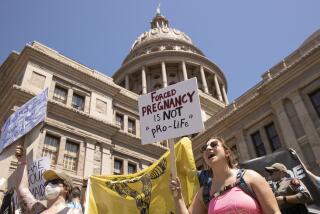Premature birth rate declines in U.S.
- Share via
For the first time in three decades, the rate of premature births in the United States has declined for two years in a row, a finding that suggests the country is finally beginning to make some progress in the battle against prematurity.
The declines were widespread and encompassing, including babies of mothers in all age groups under 40, all ethnicities, singleton and multiple births, vaginal and caesarean births, and every state except Hawaii, according to the report issued Tuesday by the government’s National Center for Health Statistics.
“We are thrilled with this sign of sustained progress,” Dr. Jennifer L. Howse, president of the March of Dimes, said in a statement.
Premature births are defined as those that occur before 37 weeks of gestation. Such early births are associated with a wide variety of health problems, including developmental delays, breathing problems, cerebral palsy and mental retardation. The U.S. has one of the highest rates of preterm births in the world — nearly double that of Europe, which is among the lowest.
Despite the decline, more than half a million babies are still born here prematurely each year.
The new data, compiled from the National Vital Statistics System — which collects data on births, deaths, marriages and such — show that the preterm birth rate dropped from 12.8% in 2006 to 12.3% in 2008, the most recent year for which data are available. The drop follows an increase of nearly one-third from the early 1980s to 2006.
The percentage of infants born between 34 and 37 weeks of gestation dropped from 9.1% to 8.8%, while the rate for those born earlier — the period associated with the most severe complications — dropped from 3.7% to 3.6%.
The preterm rate for African Americans showed the biggest drop, from 18.5% to 17.5%. The rate had declined through much of the 1990s, only to begin growing again between 2000 and 2006.
The rate for Latinos fell from 12.3% to 12.1% from 2007 to 2008, following a small increase in the preceding year.
The preterm birth rate fell significantly in 35 states, including California, and increased only in Hawaii. Before the downturn, rates had increased significantly in all 50 states but not in the District of Columbia.
Previous research had suggested that the incidence of preterm births had grown because of increases in the early induction of labor and caesarean deliveries. The rates of those dropped along with the rates of preterm births.
The report is available at https://www.cdc.gov/nchs/data/databriefs/db39.htm.






